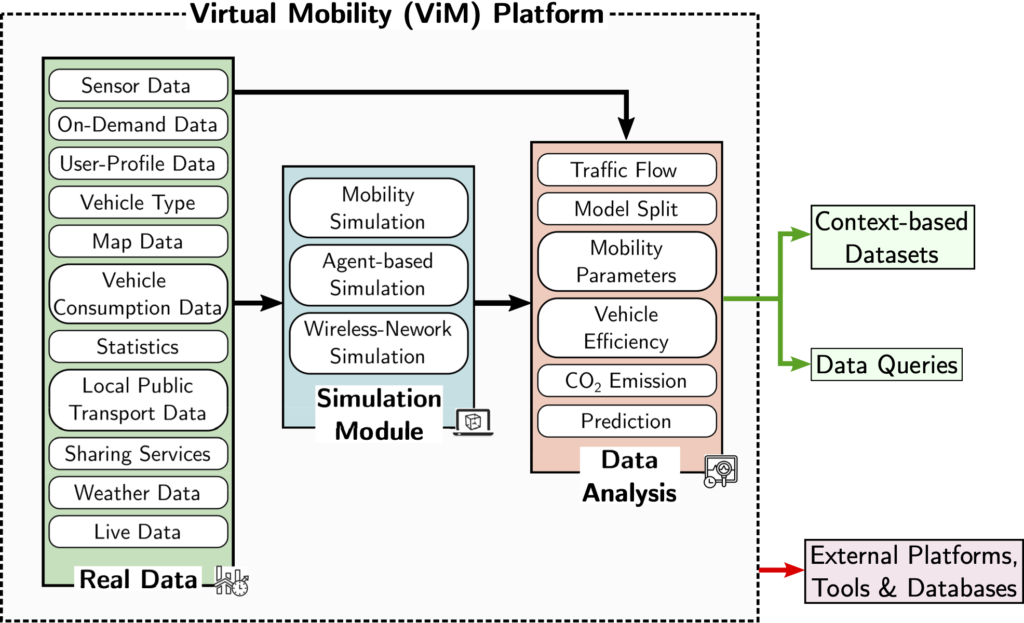Project
The digitization of mobility is a crucial issue of the future with high potential for Bavaria, as a stakeholder in the area of industry and science. Connected and autonomous driving functions are transforming the mobility market. The associated complexity offers both opportunities and challenges for mobility applications and new business models. New methods of research, development, and validation are essential. Autonomous driving is only possible through a high degree of connectivity among various services, functions, and infrastructures. This requires a holistic data concept that allows access to a variety of data from real and virtual sources.
To advance the development of innovative solutions, a prototype platform for research purposes and the development of innovative business models will be set up. The aim is to develop a software framework that enables the introduction and use of different digital and modular components and mobility data, taking into account any proprietary components. This framework is envisioned to be used as a basis for research, services, and applications.
The Virtual Mobility World (ViM) is intended to allow the investigation and simulation of different traffic scenarios and ad-hoc decisions in real time as well as of novel driving functions on a technical level (for example, collaborative driving manoeuvres). The input data can be real data, which can be combined with simulated data. The platform will thus provide the opportunity to complement and harness real data, make predictions based on that data, and to simulate and compare different mobility scenarios. The simulations can be dynamically optimized depending on the context and thus serve as a tool to supplement real data. The open platform should allow the integration of other simulators (agent-based simulation of road users, simulation of communication infrastructure such as LTE / 5G), platforms (e.g. the Connected Mobility Labs funded by the Free State of Bavaria) or test fields (e.g. digital highway test field). In conjunction with data analysis technologies, a framework is thus created that can significantly improve the quality of data and mobility services and enable a realistic investigation of complex traffic scenarios.
The innovation in ViM is the combination of historical, current traffic and context data, simulation data and data analysis technologies to generate realistic, complete, context-based datasets, as the basis for mobility services and to study highly complex mobility scenarios. Such a virtual mobility world does not exist today and has a unique character.

ViM aims to develop and evaluate a flexible, open, easy-to-use, scalable and extensible platform prototype with the following capabilities:
- The integration and use of various components for simulation, analysis, prediction, and prototyping or other algorithms.
- The data exchange between different components should take place via suitable interfaces.
- The integration, query and data analysis on context and mobility data, including:
- Entire data sets based on real and virtual/simulated data, taking into account the proprietary status of the components and data used
- Specific parameters or parameters, possibly generated from the data records, without having to grant direct access to the underlying (possibly proprietary) data
- The optimization of mobility applications based on the combination of targeted data analysis and simulation that goes beyond previous predictions.
The creation of context-based data records from a given traffic scenario takes place via the connection of the components relevant to the context. The platform allows the generation and classification of advanced context-based mobility records for research purposes or as a basis for added services.
The virtual world of mobility thus offers the opportunity to virtually test technical, functional or economic aspects for new applications and business models in advance.
